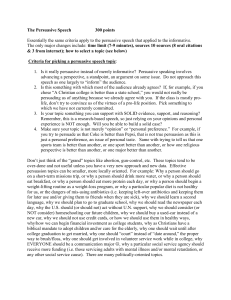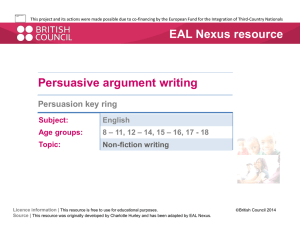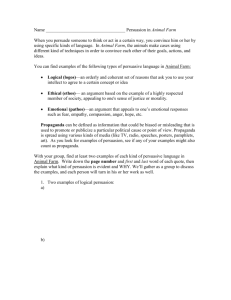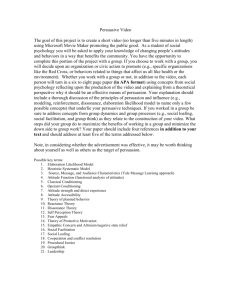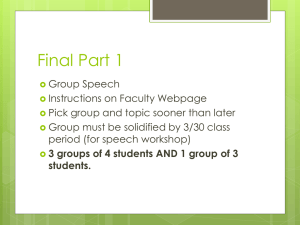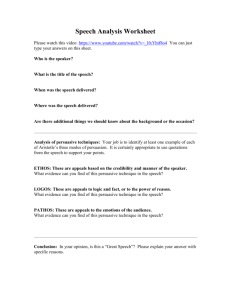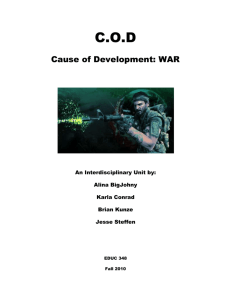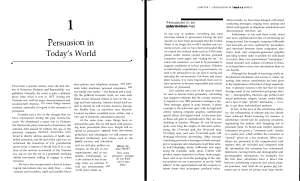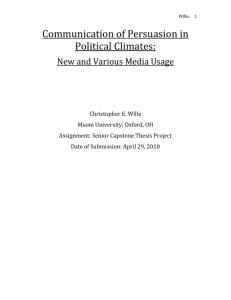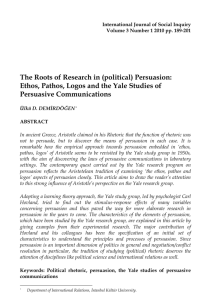SMARTER Plan for "Writing Persuasive Letters"
advertisement
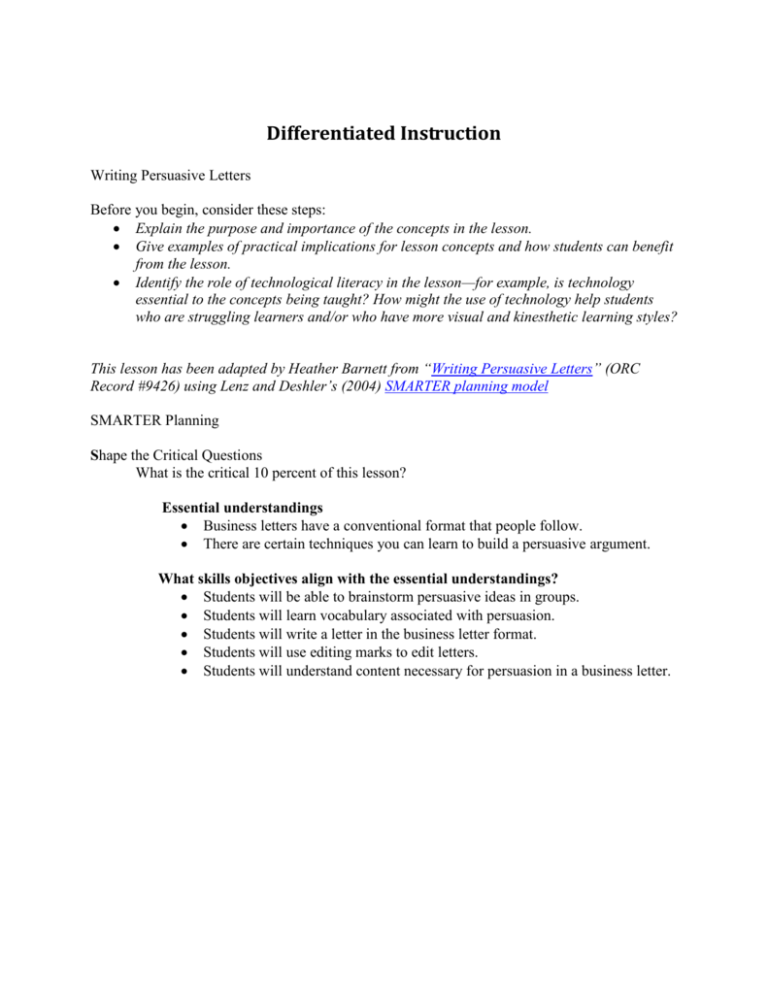
Differentiated Instruction Writing Persuasive Letters Before you begin, consider these steps: Explain the purpose and importance of the concepts in the lesson. Give examples of practical implications for lesson concepts and how students can benefit from the lesson. Identify the role of technological literacy in the lesson—for example, is technology essential to the concepts being taught? How might the use of technology help students who are struggling learners and/or who have more visual and kinesthetic learning styles? This lesson has been adapted by Heather Barnett from “Writing Persuasive Letters” (ORC Record #9426) using Lenz and Deshler’s (2004) SMARTER planning model SMARTER Planning Shape the Critical Questions What is the critical 10 percent of this lesson? Essential understandings Business letters have a conventional format that people follow. There are certain techniques you can learn to build a persuasive argument. What skills objectives align with the essential understandings? Students will be able to brainstorm persuasive ideas in groups. Students will learn vocabulary associated with persuasion. Students will write a letter in the business letter format. Students will use editing marks to edit letters. Students will understand content necessary for persuasion in a business letter. Map the Critical Content Analyze for Learning Difficulties Lesson 1 o Powerful words—some of these words may be unfamiliar to your students. Lesson 2 o Letter format—students may get confused with the kind of information that goes in each section of a business letter. o Checklist/rubric—may be too generic for students. o Editing—some students may not be able to identify errors that need to be corrected. Note: Lesson 3 is not included in this SMARTER plan except in the “Revisit Outcomes” section. Lesson 3 would be a good lesson to use as an extension of the first two lessons. Another option is to use lesson 3 in a debate format, with the class split up as the company and individuals. Reach Enhancement Decisions Lesson 1 o Have students look up synonyms for these words and discuss them in class. Another idea is to display these words in a word wall format with their definitions. Lesson 2 o Students may struggle with the letter format and may need to have the format broken down. Discuss each section of the letter format separately, and practice each section as you discuss it. Teachers may decide to have the students complete each section of their letter as they discuss it for those students who are really struggling. o Students on IEPs may need a checklist in order to accommodate their IEP goals and objectives. This would be a great opportunity for the regular classroom teacher and the intervention specialist to discuss what outcomes they would like to see from not only the students on IEPs but the class as a whole. o Teachers may need to strategically group or pair students to edit work. For instance, having two students with a learning disability in writing would not benefit those students when they edit each other’s work. Instead, teachers may need to mix ability levels as well as check periodically on students’ progress with editing. If two teachers are in the classroom (inclusion), one teacher may be assigned the job of a “double-checker” before students move on to composing their final drafts. Teach Strategically Cue: Provide an overview of the lesson (this can be done using the concept map above or creating a bulleted list highlighting the major points). Do: Use think-alouds, visual organizers, models (business letter format worksheet), brainstorming. Have students write rough draft, edit rough draft, and check final draft with rubric. Review: Have students share drafts with classmates in small groups and make revisions. Evaluate Mastery Identify instances when students use new vocabulary associated with persuasion. Evaluate students’ business letters for correct formatting. Check for the use of correct editing marks in the edited rough drafts. Evaluate the letters for appropriate content necessary for persuasion. Revisit Outcomes Reteach letter-writing skills that students struggled with through mini-lessons. Provide students the opportunity to practice persuasion using lesson 3. Incorporate letter-writing skills into other lessons (this could be done for any content area). ________________ Lenz, B. K., & Deshler, D. D. (2004). Teaching content to all. Evidence-based inclusive practices in middle and secondary schools. Boston: Pearson.
